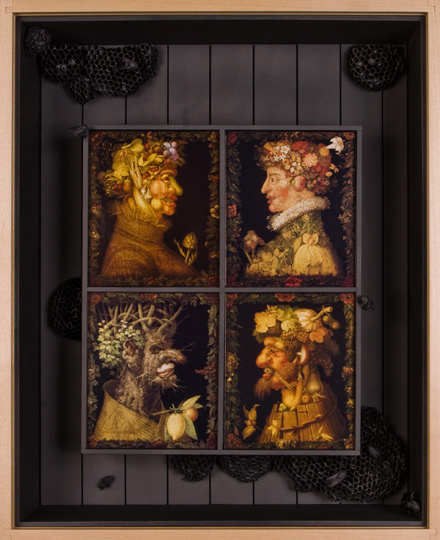In the sixteenth century the painter Giusseppe Arcimboldo arranged fruits and vegetables into human faces representing the seasons –a creative impulse directly related to his role as imperial decorator and costume designer for the Italian court. His unusual urge to organize natural specimens into human likenesses inspired some of the earliest cabinets of curiosities, including the enormous cabinet that he himself arranged for King Rudolf II at Schloss Ambras. Arcimboldo’s creative spirit was revived two centuries later when English pottery shaped like fruits and vegetables was arranged into fantastical dining table displays.
Images taken from paintings by Giuseppe Arcimboldo
(Italian,1527–1593)
Summer, Spring,Winter, Fall, 1573.

